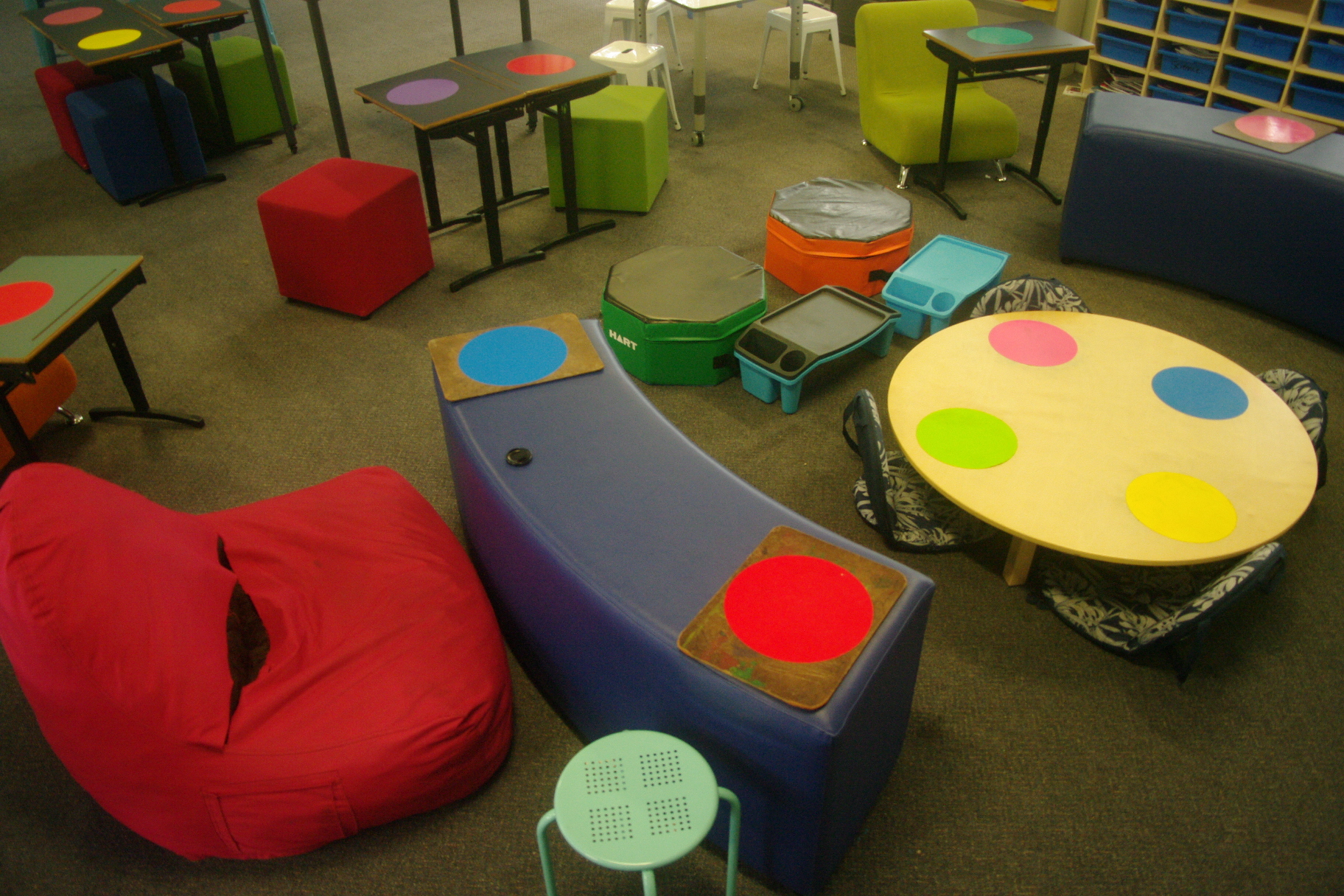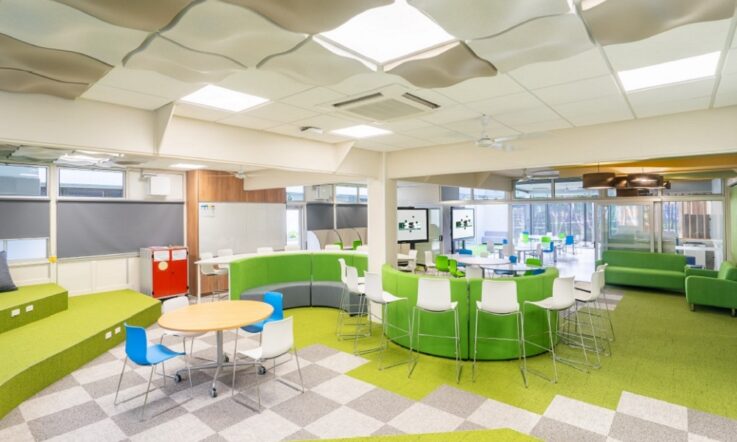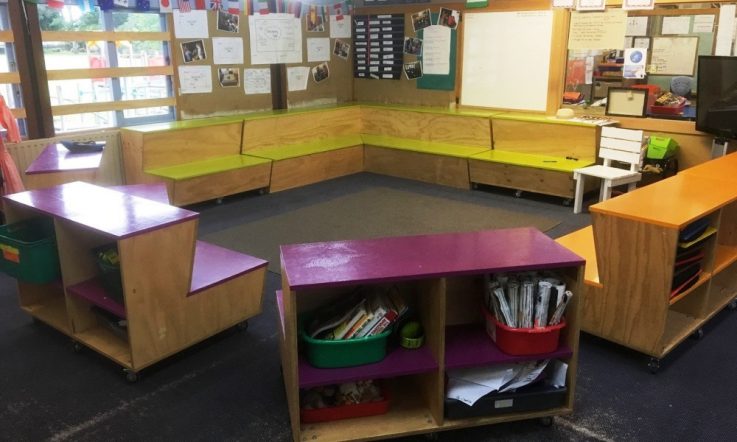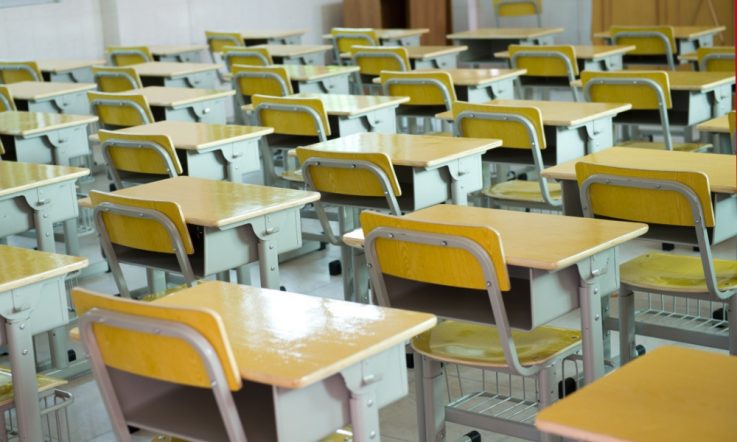When planning for this year, our principal asked what needed to change to engage students more in their learning. One of the authors of this article responded in a whisper ‘flexible seating’, thinking about their then-current classroom. It had stark, rows of desks with blue chairs and laminated nameplates reminding each student where they should be sitting.
This began a journey to transform our practice and challenge the ways of learning for a group of Year 6 students used to sitting in desks and rows for years.
What is flexible seating?
Flexible seating has been defined as moveable furniture to create an engaging learning environment (Cole et al., 2021). It is a shift in practice from being teacher-focused to student-focused learning. For us – at Yeppoon State School in Rockhampton, Queensland –
flexible seating has meant removing most of the traditional chairs and desks and introducing a variety of different seating options to promote student engagement.
The use of rows and their minimal adaptions to ‘U’ shape and similar was traditionally used to maximise on-task behaviour and reduce distraction from the teacher. Teachers tend to still use this format because of either the need to control students and/or the belief that the teacher is the most important person in the room.
How we created a flexible room
Our students have a range of different seating options, including a floor desk with recliners, couches, stools (short and tall), bean bags, and the traditional desk-and-chair. They can use kneeboards or sit on the floor with a clipboard.
While it may seem extravagant, it isn’t. There is not a set seating plan. Students choose where to sit according to the task, their learning needs and preferences at any point in time. We have used flexible seating as a part of the greater classroom design and pedagogical styles used to teach. The flexible seating allows students – whether as a whole class, in small groups, with a partner, or individually – to talk, listen, read, write, play and learn (Roskos & Neuman, 2011).
Some teachers will already be thinking of groups of students gathering, becoming disengaged in their learning. We have overcome this by building positive teacher-student relationships (Henwood & Hales, 2022). Through open conversations with the students regarding ‘good pick seats’ and ‘good pick partners’, they have taken ownership of their choices and seating arrangements. Students have become aware that some seats and people may not work well together. This has been supported through ongoing explicit lessons on choosing seats, communicating with friends, and recognising who makes a 'good learning partner'. It took only two weeks for students to understand expectations and develop a routine.
At times, more students desire the same seating option than is available. This occurred frequently early on. We overcame this by giving preference to groups of students according to the day of the week – allocating students into five groups named after the days of the week and on Monday, Monday chooses first, then Tuesday, and so on.
Did we face any issues?
Yes, there are issues. Firstly, it takes time and confidence to implement. We are not suggesting that this is for every teacher or class, it’s not. We had the confidence of a principal in a low socioeconomic school with high rates of absenteeism, behavioural issues, and student disengagement. We knew we had to change some things.
Substitute (casual relief) teachers often do not cope with the flexibility and try to restore traditional thinking. The students do not react well to this. Similarly, there is some lack of acceptance from teaching colleagues – we recognise that it’s not their cup of tea, but it is working for us and our students.
What improvements have we seen?
We’ve noticed that students who have been disengaged in learning in previous years, and frequently in trouble for it, have become engaged in their learning. The number of behaviour incidents in the classroom has halved, with the same core students from 2021 to 2022. This is a dramatic fall, which has been allocated to improved student engagement due in part to the flexible classroom arrangement.
The improvement in student engagement has a flow-on effect to academic results. An additional five per cent of students previously failing are now achieving a pass mark. Responses to student surveys show they are enjoying learning and they want to be at school, and feel more confident in communicating with their peers about their learning. School data show an improvement of seven per cent in attendance, compared to the previous year.
Conclusion
Flexible seating and learning environments have seen us to break away from traditional models and allowed a focus on student learning in an environment they are comfortable with. From our experience so far, it fosters engagement in the learning and student ownership of the space and learning, while reducing rates of disengagement and student disciplinary actions. A win for all concerned.
References and further reading
Burke, K., & Burke-Samide, B. (2004). Required Changes in the Classroom Environment It's a Matter of Design. The Clearing House: A Journal of Educational Strategies, Issues and Ideas, 77(6), 236-240. https://doi.org/10.3200/TCHS.77.6.236-240
Cole, K., Schroeder, K., Bataineh, M., & Al-Bataineh, A. (2021). Flexible Seating Impact on Classroom Environment. Turkish Online Journal of Educational Technology - TOJET, 20(2), 62-74.
Henwood, H., & Hales, E. (2022). Getting Students Engaged. Teacher’s Matter Magazine (55).
Roskos, K., & Neuman, S.B. (2011). The classroom environment: First, last, and always. The Reading Teacher, 65(2), 110-114. https://doi.org/10.1002/TRTR.01021
Is there flexibility to change the layout in your own classroom? Do you move or rearrange furniture according to the lesson you’re teaching and the task that students are working on? How does this impact the way students engage in these lessons?
Do you allow your students the freedom to choose their own seating or position in the classroom? How does this work? What are your challenges?



